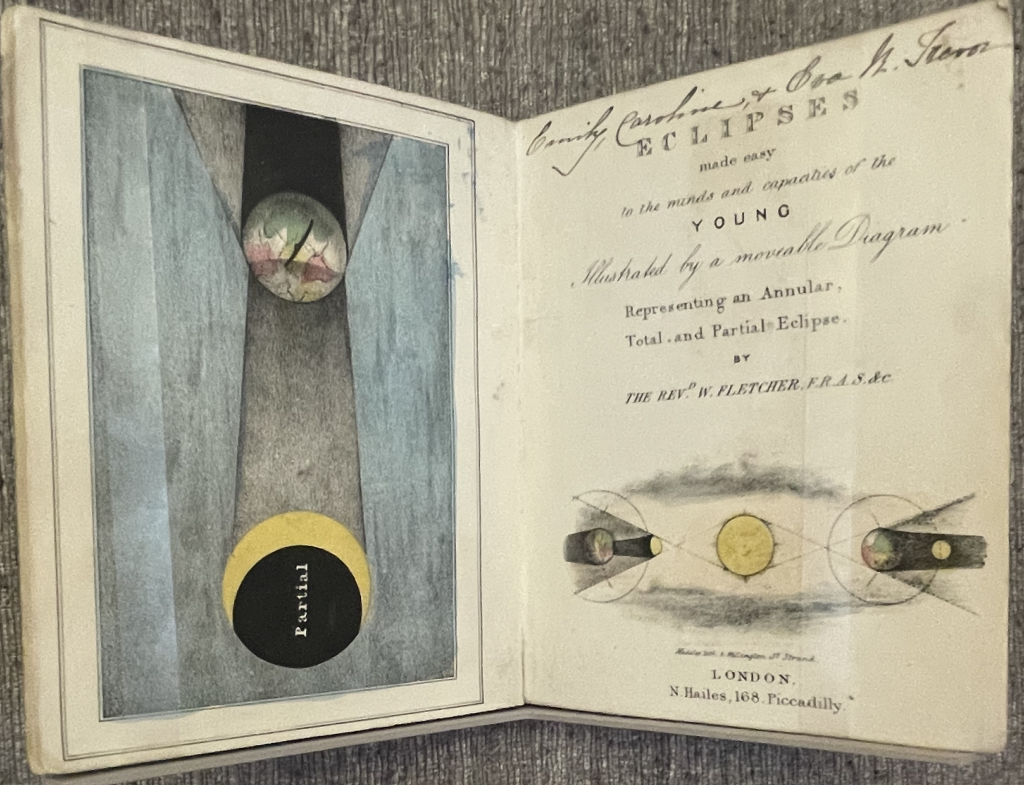This is part of a series of blog posts highlighting objects and archival documents from Social Climates: Power and the Environment in the Archives, an exhibition currently on view in the Kempner Gallery at Columbia’s RBML. Drawing on a wide array of RBML collections and materials, Social Climates explores the interconnections between culture, history, politics, and the natural world.
The following is adapted from the Social Climates exhibit essay text by Melina Moe, Curator of Literature.

Eclipses made easy, 1836. Plimpton 520 1836 F63
Some archives only take shape across vast swathes of time and space. Consider how we track and describe the movement of stars, the age of trees, or the transformation of rock strata: as naturally occurring phenomena, these are also features of nature’s archive, inspiring the creation of social institutions to collect and share data across national borders. This way of thinking about the archive expands our sense of how facts and knowledge are preserved–of rare events like the sighting of a comet, for which the period of repetition may stretch beyond a single human lifetime.

Astronomical observations can be found in cuneiform tablets, ancient papyri, the journals of Renaissance scholars, as well as initiatives extending beyond academe, such as NASA’s Near-Earth Object Database, which draws observations from telescopes operated by ordinary people around the world. Consider the planisphere, a rotating optic device (the outer ring shows time) that displays the stars and constellations overhead. Jakob Bartsch, son-in-law of Johannes Kepler, made the first star-chart planisphere in 1624. The planisphere on display in the Social Climates exhibit was created by Giovanni Cassini in 1696.
Nature’s archive continues to generate social knowledge through citizen science projects like the Near-Earth Object Database–knowledge of the stars, but also of our deepest-held beliefs. Networks of scientific knowledge are like any other social media, open to dispute, distortion, and unexpected consequences. Under the lens of the Inquisition, Galileo’s defense of Copernicus was understood to be not just a physical reordering of the solar system, but an upending of moral and spiritual order. Centuries later, the map of the border separating what would become Pennsylvania, Delaware, West Virginia and Maryland became the boundary between free states and slave states more 50 years after it was originally charted by Charles Mason and Jeremiah Dixon, two British astronomers and surveyors. The Mason-Dixon line still evokes a cultural boundary in the national imaginary of American politics.
Social Climates runs through September 30, 2022 in Kempner Gallery at Columbia’s RBML, 6th Floor Butler.